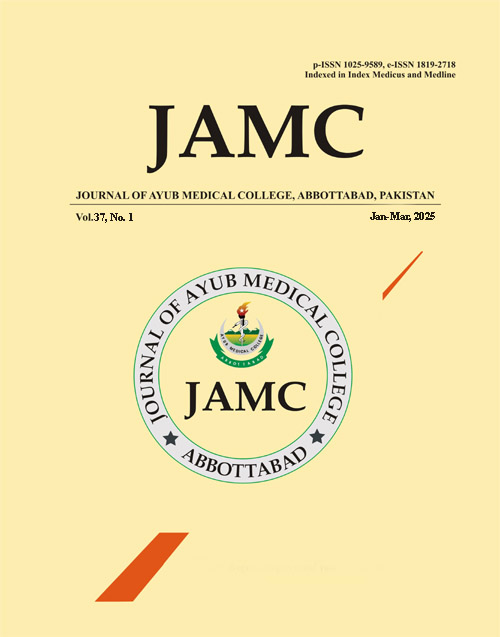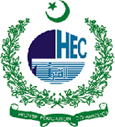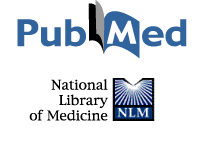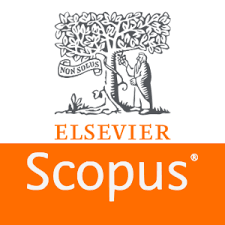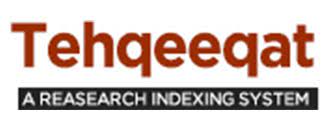OPEN LABEL STUDY COMPARING THE EFFICACY OF CONTINUOUS LOW DOSE ISOTRETINOIN VERSUS INTERMITTENT LOW DOSE ISOTRETINOIN REGIMENS IN MODERATE TO SEVERE ACNE VULGARIS
DOI:
https://doi.org/10.55519/JAMC-01-13671Keywords:
Acne vulgaris, isotretinoin, Low dose, Continuous, Intermittent, EfficacyAbstract
Background: Acne vulgaris, recognized as the eighth most prevalent disease globally, affects approximately 9.4% of the world population. It can manifest in a spectrum ranging from mild physiologic acne to severe presentations such as nodules, cysts, and abscesses. This open-label comparative study was conducted at the Dermatology OPD of Akbar Niazi Teaching Hospital, Islamabad, from September 1, 2021, to March 1, 2022, with the objective of evaluating the efficacy of low-dose continuous versus low-dose intermittent oral isotretinoin in patients with moderate-to-severe acne vulgaris. Acne was defined by the presence of lesions—including papules, pustules, comedones, or cysts—with a Global Acne Grading System (GAGS) score of 19–30 indicating moderate and 31–38 indicating severe cases. Efficacy was defined as a greater than 80% reduction in the GAGS score after three months of treatment, calculated as: percentage decrease = total decrease in score / baseline score ×100. The hypothesis stated that a difference exists in efficacy between the two isotretinoin regimens. Methods: A total of 60 patients of both gender with Acne vulgaris were included in the study. Patients were divided in two groups, A and B. Each group had 30 patients. The initial assessment of acne was done by using GAGS score (global acne scoring system). In group A, patients were prescribed 20 mg oral isotretinoin once daily for 6 months and in Group B patients were prescribed intermittent regimen - 20 mg oral isotretinoin on alternate day for 6 months. Efficacy was noted by lesion counts from both groups, on monthly basis for 3 months and a follow up visit at 6 months. Results: Age range in this study was 18 to 40 years with mean age of 24.866±3.29 years and mean GAGS score was 28.266±2.79 in Group A and mean age of 25.266±3.67 years and mean GAGS score was 28.533±3.12 in Group B. Efficacy was observed in 27 (90%) patients in group A as compared to 25 (83.3%) patients in group B (p=0.447). Conclusion: In conclusion, the present study demonstrates that the low-dose continuous and low-dose intermittent oral isotretinoin regimens have comparable efficacy at the end of treatment.
References
1. Babar O, Mobeen A. Prevalence and psychological impact of acne vulgaris in female undergraduate medical students of Rawalpindi and Islamabad, Pakistan. Cureus 2019;11(9):e5722.
2. Hay RJ, Johns NE, Williams HC. The global burden of skin disease in 2010: an analysis of the prevalence and impact of skin conditions. J Invest Dermatol 2014;134(6):1527–34.
3. Abo El-Fetoh NM, Alenezi NG, Alshamari NG, Alenezi OG. Epidemiology of acne vulgaris in adolescent male students in Arar, Kingdom of Saudi Arabia. J Egyptian Public Health Assoc 2016;91(3):144–9.
4. Alanazi MS, Hammad SM, Mohamed AE. Prevalence and psychological impact of Acne vulgaris among female secondary school students in Arar city, Saudi Arabia, in 2018. Electron Physician 2018;10(8):7224–9.
5. Baldwin H, Tan J. Effects of Diet on Acne and Its Response to Treatment. Am J Clin Dermatol 2021;22(1):55–65.
6. Alshammrie FF, Alshammari R, Alharbi RM, Khan FH, Alshammari SK. Epidemiology of acne vulgaris and its association with lifestyle among adolescents and young adults in Hail, Kingdom of Saudi Arabia: a community-based study. Cureus 2020;12(7):e9277.
7. Liu L, Xue Y, Chen Y, Chen T, Zhong J, Shao X, et al. Prevalence and risk factors of acne scars in patients with acne vulgaris. Skin Res Technol 2023;29(6):e13386.
8. Vasam M, Korutla S, Bohara RA. Acne vulgaris: A review of the pathophysiology, treatment, and recent nanotechnology-based advances. Biochem Biophys Rep 2023;36:101578.
9. Dhaked DR, Meena RS, Maheshwari A, Agarwal US, Purohit S. A randomized comparative trial of two low-dose oral isotretinoin regimens in moderate to severe acne vulgaris. Indian Dermatol Online J 2016;7(5):378–85.
10. Oge' LK, Broussard A, Marshall MD. Acne Vulgaris: Diagnosis and Treatment. Am Fam Physician 2019;100(8):475–84.
11. Layton AM, Knaggs H, Taylor J, Cunliffe WJ. Isotretinoin for acne vulgaris--10 years later: a safe and successful treatment. Br J Dermatol 1993;129(3):292–6.
12. Leyden JJ, Del Rosso JQ, Baum EW. The use of isotretinoin in the treatment of acne vulgaris: clinical considerations and future directions. J Clin Aesthet Dermatol 2014;7(2 Suppl):S3–21.
13. Tahir CM. Efficacy and adverse effects of systemic isotretinoin therapy. J Pak Assoc Dermatol 2011;21(1):38–42.
14. Graf SW, Whittle SL. Isotretinoin-induced skeletal hyperostosis. Springerplus 2014;3:698.
15. Kaymak Y, Ilter N. The effectiveness of intermittent isotretinoin treatment in mild or moderate acne. J Eur Acad Dermatol Venereol 2006;20(10):1256–60.
16. Amichai B, Shemer A, Grunwald MH. Low-dose isotretinoin in the treatment of acne vulgaris. J Am Acad Dermatol 2006;54(4):644–6.
17. Goulden V, Clark SM, McGeown C, Cunliffe WJ. Treatment of acne with intermittent isotretinoin. Br J Dermatol 1997;137(1):106–8.
18. Mandekou-Lefaki I, Delli F, Teknetzis A, Euthimiadou R, Karakatsanis G. Low-dose schema of isotretinoin in acne vulgaris. Int J Clin Pharmacol Res 2003;23(2-3):41–6.
19. Akman A, Durusoy C, Senturk M, Kic CK, Soyturk D, Alpsoy E. Treatment of acne with intermittent and conventional isotretinoin: a randomized, controlled multicenter study. Arch Dermatol Res 2007;299(10):467–73.
20. Cunliffe WJ, van de Kerkhof PC, Caputo R, Cavicchini S, Cooper A, Fyrand OL, et al. Roaccutane treatment guidelines: results of an international survey. Dermatology 1997;194(4):351–7.
Downloads
Published
How to Cite
Issue
Section
License
Copyright (c) 2025 Farhat Rehman, Durreshehwar Arshad Pirzada, Sumaira Abdullah, Mahvish Aftab Khan

This work is licensed under a Creative Commons Attribution-NoDerivatives 4.0 International License.
Journal of Ayub Medical College, Abbottabad is an OPEN ACCESS JOURNAL which means that all content is FREELY available without charge to all users whether registered with the journal or not. The work published by J Ayub Med Coll Abbottabad is licensed and distributed under the creative commons License CC BY ND Attribution-NoDerivs. Material printed in this journal is OPEN to access, and are FREE for use in academic and research work with proper citation. J Ayub Med Coll Abbottabad accepts only original material for publication with the understanding that except for abstracts, no part of the data has been published or will be submitted for publication elsewhere before appearing in J Ayub Med Coll Abbottabad. The Editorial Board of J Ayub Med Coll Abbottabad makes every effort to ensure the accuracy and authenticity of material printed in J Ayub Med Coll Abbottabad. However, conclusions and statements expressed are views of the authors and do not reflect the opinion/policy of J Ayub Med Coll Abbottabad or the Editorial Board.
USERS are allowed to read, download, copy, distribute, print, search, or link to the full texts of the articles, or use them for any other lawful purpose, without asking prior permission from the publisher or the author. This is in accordance with the BOAI definition of open access.
AUTHORS retain the rights of free downloading/unlimited e-print of full text and sharing/disseminating the article without any restriction, by any means including twitter, scholarly collaboration networks such as ResearchGate, Academia.eu, and social media sites such as Twitter, LinkedIn, Google Scholar and any other professional or academic networking site.

